was revolutionary for its day. It turned the way the world looked at design completely on its head. Bauhaus sought to combine the fine arts with crafts by closing the schism between art and industry. Before this school of design and design philosophy came into being, things we term “fine arts‖such as design and architecture–were routinely held in higher regard than craftsmanship. Craftsmanship includes disciplines like painting or woodworking. As a result, a broad variety of visual arts came under the Bauhaus design banner and were merged with workmanship to create a utopian design philosophy based on celebrating the aesthetic with the practical. Today, almost 100 years after its inception, Bauhaus still remains a highly influential force in design and beyond. It epitomizes the tenets of German design to the entire world and demonstrates what’s possible when designers combine minimalism and mass production. Its legacy is seen in everything from glorious typefaces and web designs to buildings and essential design principles.
The History of Bauhaus Design
The movement’s origins can be traced back to one school: the German art school of the same name called Staatliches Bauhaus. Though it was only in operation from 1919 to 1933, its short existence belies the far-reaching impact this design philosophy has had on the rest of the world in the several decades since.
 Founded by Walter Gropius, a German architect and widely seen as one of the trailblazing members of modernist architecture, the Bauhaus school literally translates to construction house. This can be confusing since the actual school didn’t even have an architecture department in its early years, but would go on nonetheless to profoundly influence modern design, modernist architecture, art, and architectural and design instruction.
Over the course of its short life, the school and its design philosophy existed in the following cities and periods:
Founded by Walter Gropius, a German architect and widely seen as one of the trailblazing members of modernist architecture, the Bauhaus school literally translates to construction house. This can be confusing since the actual school didn’t even have an architecture department in its early years, but would go on nonetheless to profoundly influence modern design, modernist architecture, art, and architectural and design instruction.
Over the course of its short life, the school and its design philosophy existed in the following cities and periods:
- Weimar (1919 to 1925)
- Dessau (1925 to 1932)
- Berlin (1932 to 1933)
The school was forced to close under intimidation from the Nazi regime, with its directors and staff being forced to leave Germany and emigrate to various countries all over the world. This dispersion of its faculty was actually a significant factor in helping to spread the Bauhaus design aesthetic worldwide.
First Period: Weimar (1919 to 1925)
In 1919, the Bauhaus school opened its doors with Gropius as its first director. His stated objective was to spearhead a design movement free of the class barriers that put up walls between artists and craftsmen. In its early years of operation, its faculty was a veritable whos-who of pioneering European artists:
- Johannes Itten — Swiss designer and expressionist painter
- Lyonel Feininger — German-American painter and Expressionism advocate
- Gerhard Marcks — German sculptor and artist
- Oskar Schlemmer — German designer, painter, sculptor and choreographer
- Paul Klee — Swiss painter and artist known for Cubism, Surrealism, and Expressionism
- Wassily Kandinsky — Russian art theorist and painter
In its first three years, Itten steered the course for much Bauhaus’ education, which was shaped by his admiration of Expressionism. His preliminary course was a student’s first contact with Bauhaus design’s ideas.
 After Itten, Hungarian designer and painter Laszlo Moholy-Nagy took over, and he shifted Bauhaus’ introductory course to favor New Objectivity (read: modern architecture) that was also near and dear to Gropius. This change was important because it crystallized Gropius’ view at the school, which was to adapt architecture to fit the early 20th century’s rise of cars, radios, and machines.
At this time, the school also issued its own magazine called, appropriately, Bauhaus, and book series called Bauhausbücher.
As 1925 approached, the school was being pressured by the local government to the point that its funding was eventually cut by 50%. This set the stage for its relocation to Dessau.
After Itten, Hungarian designer and painter Laszlo Moholy-Nagy took over, and he shifted Bauhaus’ introductory course to favor New Objectivity (read: modern architecture) that was also near and dear to Gropius. This change was important because it crystallized Gropius’ view at the school, which was to adapt architecture to fit the early 20th century’s rise of cars, radios, and machines.
At this time, the school also issued its own magazine called, appropriately, Bauhaus, and book series called Bauhausbücher.
As 1925 approached, the school was being pressured by the local government to the point that its funding was eventually cut by 50%. This set the stage for its relocation to Dessau.
Second Period: Dessau (1925 to 1932)
At Dessau, the design of the school’s building shared many similarities to the International Style of architecture, which was characterized by:
- Focusing on volume over mass
- Using mass-produced and lightweight materials
- Consistent modular forms
- A rejection of all color and ornaments
- Using flat surfaces that alternate with glass
At this location, Gropius founded its new architecture program and resigned as director to make way for Hannes Mayer, a Swiss architect and the new director. Under Mayer, the school experienced a few milestones, namely the construction of the ADGB Trade Union School according to Bauhaus design and five apartment buildings in Dessau. For the first time in its history, the school also turned a profit. Unfortunately, the Nazis gained control of the Dessau city council by 1931, which forced the school to move to yet another location.
Third Period: Berlin (1932 to 1933)
This was the shortest iteration of the Bauhaus school during its already short existence, but it also paved the way for Bauhaus design’s expansion well beyond the German borders. Shortly before the move, German-American architect Ludwig Mies van der Rohe became the school’s new director. In Berlin in late 1932, he opened the third iteration of Bauhaus in an abandoned factory, whose rent he paid with his own money.
The Berlin school lasted only for 10 months before it was closed under pressure from the Nazi regime that was gaining power. To the Nazis, Bauhaus design was “un-German†due to its modernist style, as well as “degenerate art†because of its perceived Jewish or Communist associations.
 In April 1933, the school shut down for good due to this persecution.
However, this prompted many of Bauhaus designs’ principles–like Gropius, Meyer, and Mies–to emigrate to countries like Switzerland, Britain, Mexico and the U.S. Thanks to their flight from the Nazis, Bauhaus design traditions lived on and proliferated in various continents.
In April 1933, the school shut down for good due to this persecution.
However, this prompted many of Bauhaus designs’ principles–like Gropius, Meyer, and Mies–to emigrate to countries like Switzerland, Britain, Mexico and the U.S. Thanks to their flight from the Nazis, Bauhaus design traditions lived on and proliferated in various continents.
Characteristics of Bauhaus Design
The design philosophy of Bauhaus is form follows function. This is a clue as to how products designed in the Bauhaus aesthetic will look. In other words, Bauhaus is based on a no-frills, no-gimmicks approach that favors utility over show.
This philosophy can be very prominently seen in areas where Bauhaus has had a major impact: modern furniture design and architecture. When you look at a chair or a building made in the mold of Bauhaus, you immediately notice a stark bluntness to it, with sharp corners and edges and strong lines. Because of this bare-bones approach, Bauhaus design was indeed somewhat shocking to people in the early 20th century, given the then-radical design departures from the norm.
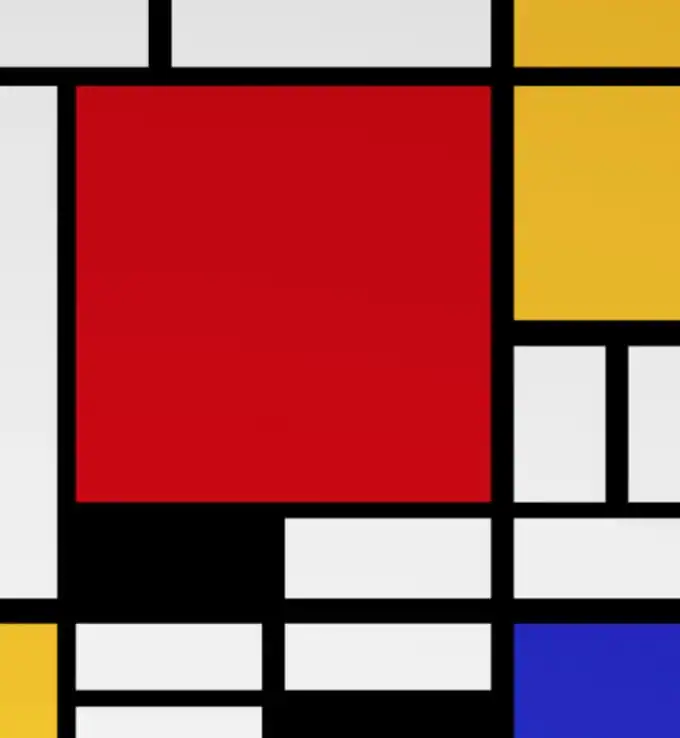 Qualities of Bauhaus design usually include:
Qualities of Bauhaus design usually include:
- Plainness
- Straightforward simplicity
- Being conducive to mass production
- Retaining the integrity of craft materials (as in materials should be used in their honest and natural form and not altered)
- Streamlined aesthetics
- Modernity
Bauhaus, therefore, favors pragmatism and practicality in design over beauty for the mere sake of beauty. That’s not to say, though, that Bauhaus can’t be visually attractive. When you read on, you’ll further see the visual appeal in some of its starkly minimalist designs.
Noteworthy Examples of Bauhaus Design
Bauhaus has heavily influenced various industries, from graphic design and architecture to typography and furniture. Take a look at some of the world’s best examples of this school of design.
Typography
Bauhaus
The namesake font of the design movement, Bauhaus font takes its inspiration from the experimental Universal font of Herbert Bayer from 1925. Bayer was widely regarded as the last living member of the design movement until his death in 1985.
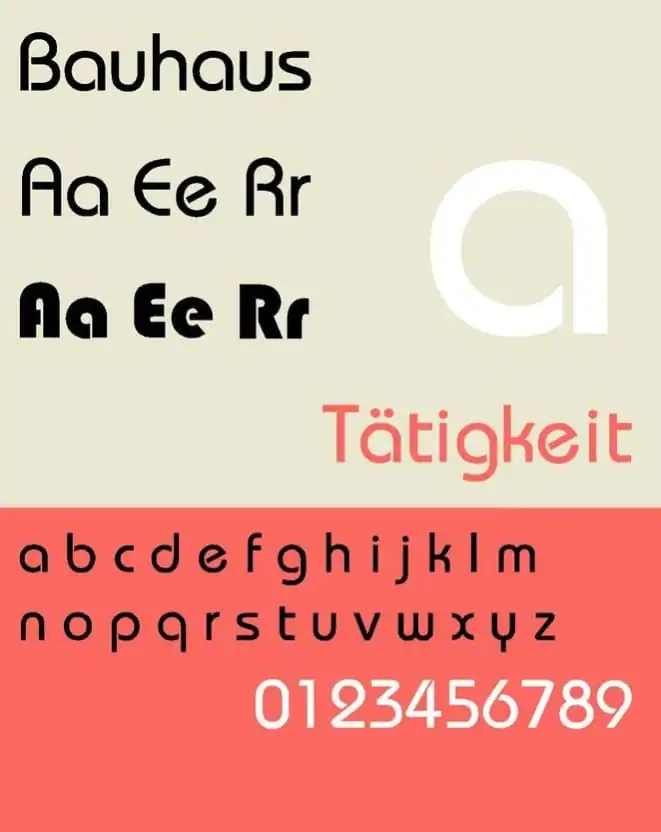 Created in 1969, the Bauhaus font almost resembles a stencil effect in some characters, but it embodies simplicity and straightforwardness above all else. This appropriately sans-serif typeface features very legible and readable letters with fairly even and thick stroke widths.
Check out our selection of Bauhaus-inspired typefaces:
Created in 1969, the Bauhaus font almost resembles a stencil effect in some characters, but it embodies simplicity and straightforwardness above all else. This appropriately sans-serif typeface features very legible and readable letters with fairly even and thick stroke widths.
Check out our selection of Bauhaus-inspired typefaces:
Futura
The Futura typeface is another well-known representation of Bauhaus in typography. This geometric and sans-serif font takes its design cues from the geometric shapes that became emblematic of the distinct, visual shapes seen in Bauhaus. Commissioned by the Bauer Type Foundry, a storied German type foundry, Futura has characteristics that espouse modernity. Its qualities include:
- Efficiency
- Forwardness
- Even-weighted strokes
- Tall ascenders
One of the most interesting tidbits about this typeface is its usage–which confirms its pragmatic design. Recall that Bauhaus design is meant to espouse function over form, for the ultimate in usability.
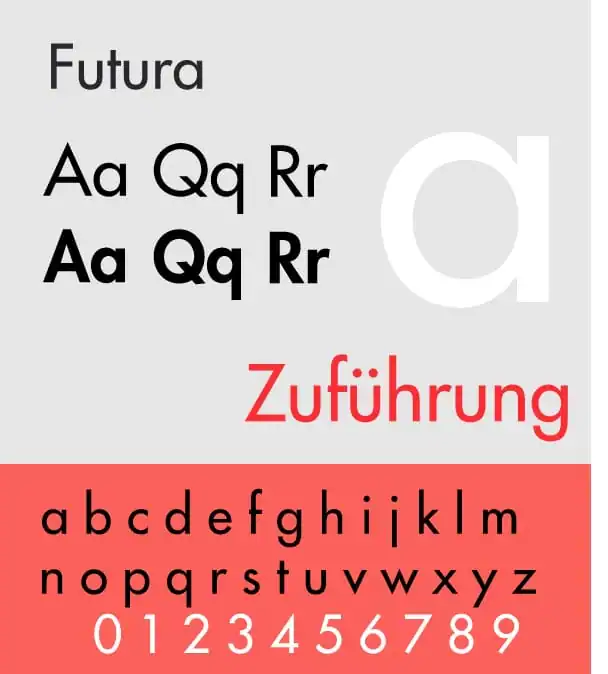 Futura, thanks to its legibility and readability, has been used in:
Futura, thanks to its legibility and readability, has been used in:
- IKEA ads and logos
- Volkswagen ads and logos
- Royal Dutch Shell ads and logos
- typography in the movie V for Vendetta
- Mercedes-Benz instrument panels graphics
For additional inspiration and design ideas on how to use Futura in your own projects, see our great selection of Futura fonts in our marketplace, and check out some of our Futura fonts:
Architecture
Bauhaus has left a lasting mark on building construction throughout the world.
Bauhaus Dessau
One of the earliest contributions to this design aesthetic was the Bauhaus school’s actual building in Dessau, which was built by Gropius in 1926. This ultra-modernist (for its time) structure is immediately noticeable by its blocky, glass-and-concrete design.
 Using elements of the International Style, the building featured many unique design stylings such as:
Using elements of the International Style, the building featured many unique design stylings such as:
- Window glazing
- A reinforced concrete and brickwork skeleton
- Asphalt tile-covered roofs intended for walking on
- Mushroom-like ceilings
The Bauhaus Archive
The Bauhaus Archive is located in Berlin and houses the biggest collection of Bauhaus-related works in the world. Opened in 1979, the Archive is the epitome of Bauhaus design, which only makes sense.
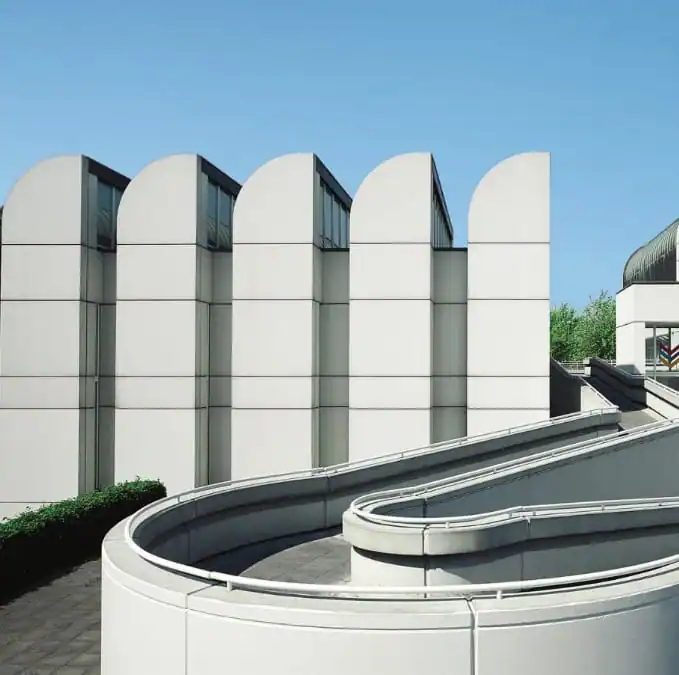 Its design embodies minimalism and convenience, a “form follows function†motive that makes it stand out among all other buildings in Berlin. Its roof is unique to the extreme: It was built to resemble an ocean liner’s smokestacks!
Its design embodies minimalism and convenience, a “form follows function†motive that makes it stand out among all other buildings in Berlin. Its roof is unique to the extreme: It was built to resemble an ocean liner’s smokestacks!
The Stillman House
The Stillman House, in Connecticut, is a fine American take on Bauhaus. Constructed back in 1951, the structure takes inspiration from Bauhaus giant Marcel Breuer’s Gregory Ain example, “House in the Garden.â€
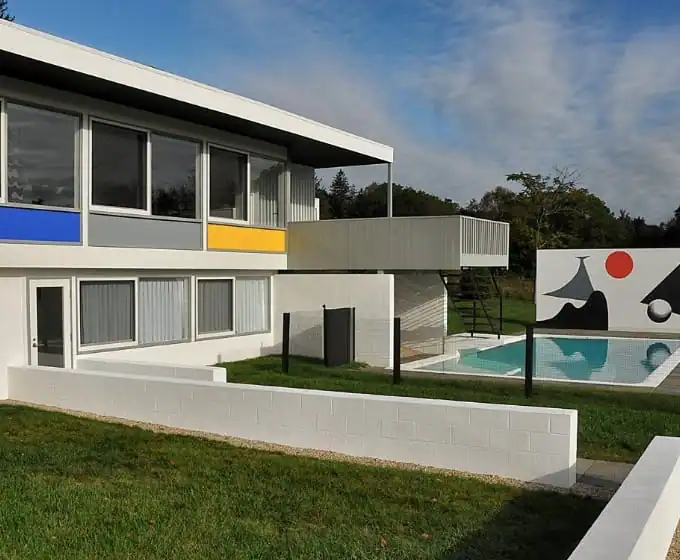 A study in all the design elements of Bauhaus, the home boasts the classic, bold colors so famous of the design style, in addition to its blocky, straight and clean lines. The presence of many windows on the house’s façade is another telltale sign of Bauhaus influence.
A study in all the design elements of Bauhaus, the home boasts the classic, bold colors so famous of the design style, in addition to its blocky, straight and clean lines. The presence of many windows on the house’s façade is another telltale sign of Bauhaus influence.
Modern Furniture
Bauhaus design has produced many notable contributions to furniture design. Here are some of the most famous.
The Cantilever Chair
Not all products that were designed in the Bauhaus style in its early days were actually associated with the school of the same name. A perfect example is the cantilever chair.
 Designed by Marcel Breuer, a Hungarian designer and architect, the chair isn’t propped up by the traditional arrangement of four legs; instead, it’s supported by one, continuous leg that’s fitted to one end of the seat of the chair and then molded into an L shape. As a result, the single leg also doubles as the base of the chair.
This extremely common chair design is nearly ubiquitous today.
Designed by Marcel Breuer, a Hungarian designer and architect, the chair isn’t propped up by the traditional arrangement of four legs; instead, it’s supported by one, continuous leg that’s fitted to one end of the seat of the chair and then molded into an L shape. As a result, the single leg also doubles as the base of the chair.
This extremely common chair design is nearly ubiquitous today.
Nesting Tables
Nesting tables are Bauhaus’ answer to the Russian matryoshka doll, where dolls of decreasing size are placed inside each other. With Josef Albers’ nesting tables, you have the same concept…except with tables of decreasing size neatly stacking under each other.
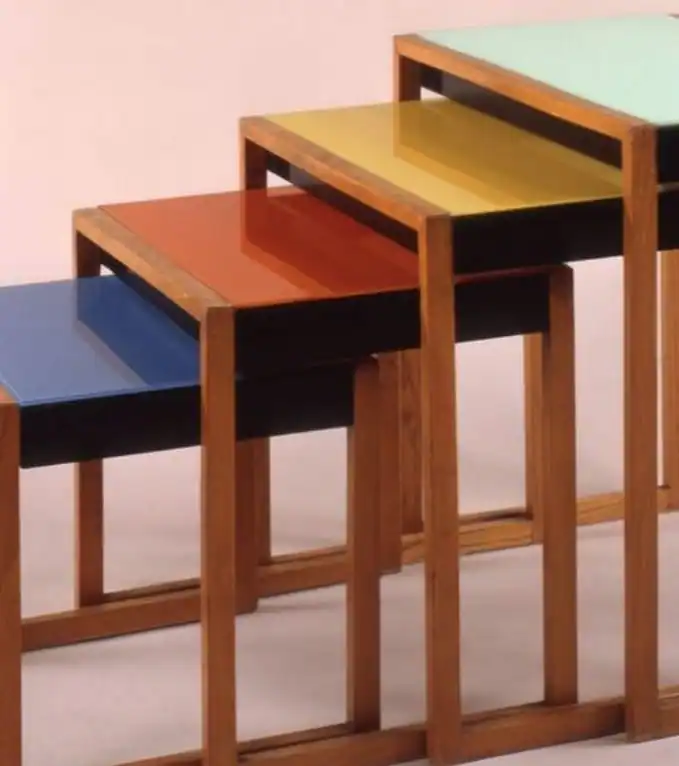 Albers was the Bauhaus school’s furniture workshop’s artistic director for 1926 to 1927. While there, he designed these stacking tables as the epitome of space-saving minimalism. Their stark, vibrant colors also epitomize the foundational color scheme that would’ve been taught in the school’s preliminary course. Thanks to the “form follows function†philosophy of the school, nesting tables work together or independently.
Albers was the Bauhaus school’s furniture workshop’s artistic director for 1926 to 1927. While there, he designed these stacking tables as the epitome of space-saving minimalism. Their stark, vibrant colors also epitomize the foundational color scheme that would’ve been taught in the school’s preliminary course. Thanks to the “form follows function†philosophy of the school, nesting tables work together or independently.
The Wassily Chair
Breuer also designed the Wassily Chair, another impressive feat of Bauhaus furniture design. A striking piece of furniture, it features a tubular steel construction that gives it an unmistakable, evocative look. Chosen because of its lightness, the tubular steel frame means the chair only has two legs instead of the traditional four.
 Contributing to the chair’s simplicity is the choice of upholstery. Black leather straps, replacing the original fabric version, create the seating surface.
One of the most popular chairs of the 20th century, the Wassily Chair is still mass-produced today by different manufacturers, sometimes under different names.
Contributing to the chair’s simplicity is the choice of upholstery. Black leather straps, replacing the original fabric version, create the seating surface.
One of the most popular chairs of the 20th century, the Wassily Chair is still mass-produced today by different manufacturers, sometimes under different names.
Web Design
Bauhaus has even infiltrated the far reaches of the web with its indelible mark on web design in general.
The MET Website
The Metropolitan Museum of Art’s Bauhaus Timeline of Art History webpage features a slew of Bauhaus designs in its photography and colors. The horizontally scrolling slider at the top of the page gives site visitors a generous look at various products and designs created by this technique.
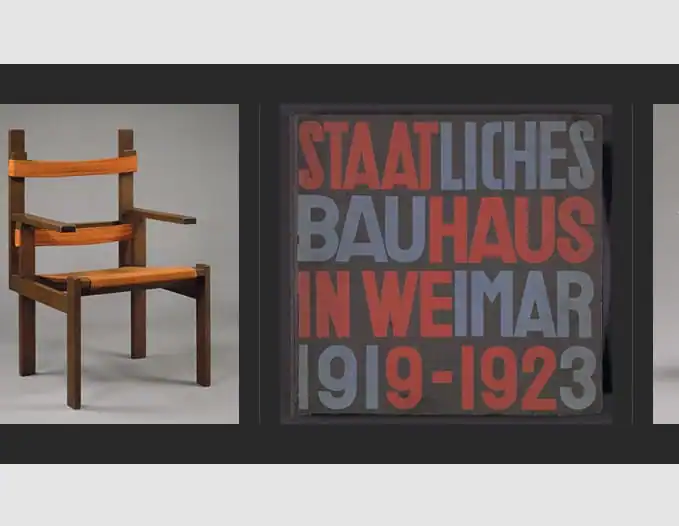 Visitors also get a quick crash course in the short history of Bauhaus.
Visitors also get a quick crash course in the short history of Bauhaus.
923a Website
This design agency from France is unabashedly proud of its Bauhaus-inspired projects and portfolio, so much so that it splashes colorful snapshots and images all over its site. This is very reminiscent of the vibrant colors one can see in Bauhaus-inspired paintings and certain pieces of furniture.
 It’s almost like the company’s portfolio serves as a big love letter to Bauhaus. At the very least, the agency wears its Bauhaus colors on its sleeve.
It’s almost like the company’s portfolio serves as a big love letter to Bauhaus. At the very least, the agency wears its Bauhaus colors on its sleeve.
Locations
In particularly special spots on the globe, entire sections of cities have been built in the Bauhaus style as an homage to this school of design.
The White City of Tel Aviv
One of the biggest cities in Israel can boast of being home to an entire stretch of real estate that’s exclusively built in the Bauhaus style. Tel Aviv is home to the White City, which is a grouping of more than 4000 structures that was constructed in the 1930s by Jewish architects exiled by the Nazis.
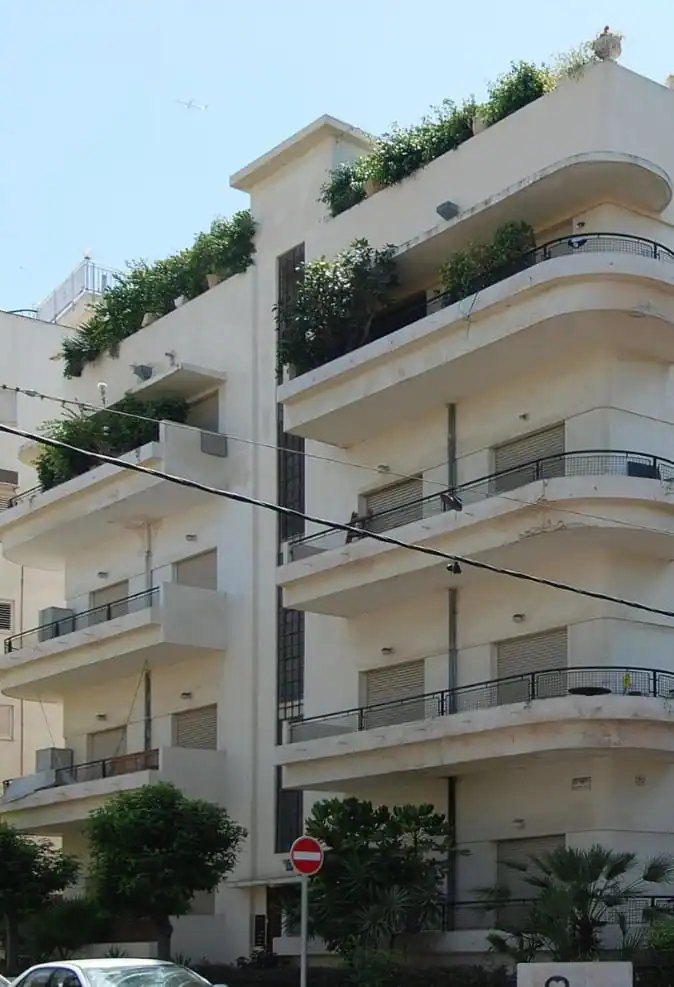 Tel Aviv can legitimately brag about having the most buildings constructed in this style of any location in the world.
As a result of this concentration of Bauhaus buildings, UNESCO (United Nations Educational, Scientific and Cultural Organization), back in 2003, recognized the White City as a World Cultural Heritage site. It proclaimed the stretch of land as a shining iteration of early 20th-century new-town planning and architecture.
Tel Aviv can legitimately brag about having the most buildings constructed in this style of any location in the world.
As a result of this concentration of Bauhaus buildings, UNESCO (United Nations Educational, Scientific and Cultural Organization), back in 2003, recognized the White City as a World Cultural Heritage site. It proclaimed the stretch of land as a shining iteration of early 20th-century new-town planning and architecture.
An Indelible Design Style
In its almost 100 years of existence, Bauhaus design has survived a lot of adversity and still thrived. It survived the political chaos of pre-World War II Germany, Nazism, the exile of its pioneers, and other design trends that have come and gone. It’s still here in the 21st century, inspiring new generations of creatives and designers. Its strength and beauty lie in its strict dedication to functionality and minimalism. In design, these two concepts are timeless, which explains its longevity.
Products Seen In This Post:
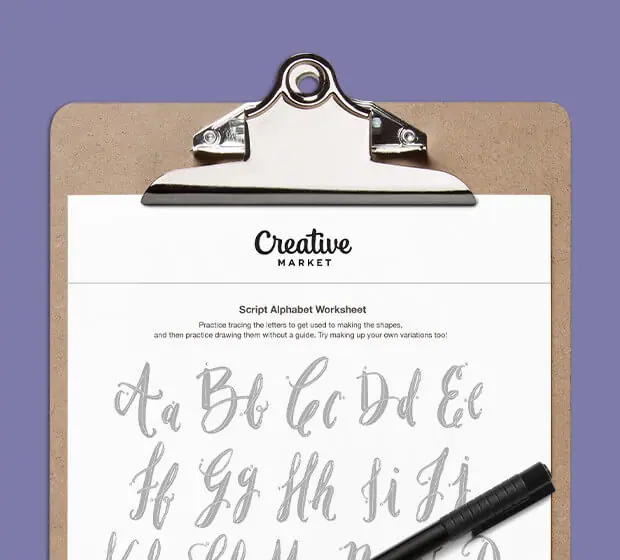
Download these worksheets and start practicing with simple instructions and tracing exercises.
Download now!Marc is a copywriter and marketer who runs The Glorious Company, a marketing agency. An expert in business and marketing, he helps businesses and companies of all sizes get the most bang for their ad bucks.
View More Posts









